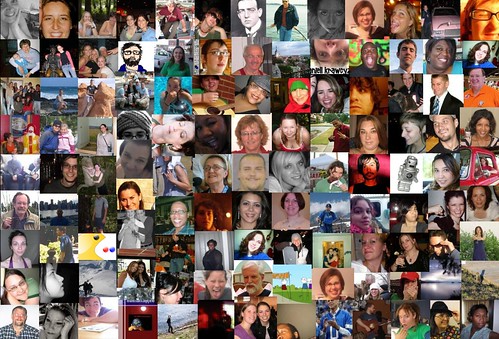New England Construction
Wrote this a while back and it’s been floating around my drafts pile. The story is a little light, but mostly I wrote it to remember all the arcane details my landlord’s handyman told me when he came to rehang our doors.
Monday morning; my girl was out of town on business. Her business. I was watching the Price is Right: dolts with nothing better to do with their time either. One knocked at my door.
I wiped the spent food refuse and old files towards the far end of my desk. The desk is a large one and sometimes that’s needed. Today it wasn’t.
I called it, her, in.
I’m no bunny humper but fur coats make little sense to me I don’t need the socio-economic, market differentiation explanation. Here’s an old woman, probably afraid to watch the evening news, yet wears the clothing equivalent of a sausage factory.
I operate my business on a sliding scale. I slid it to the right. I’ve been known to do pro-bono, but I didn’t think she’d need it. She didn’t.
“I’ve lost something.”
I keep my list of services vague. Boston’s a tough town and you never know when a treed cat will pay the heating bill.
“A ring, it’s somewhere in my house.”
“I’m sorry, Miss—”
“Capshaw, Rosemary Capshaw.”
“I don’t do house cleaning. Perhaps you have an assistant?” Or a psychic. But from the looks of her she probably did; on retainer. A phrenologist too. I gave the scale another shove.
“No, it’s in my house. Somewhere in the walls.”
“You need a carpenter.” And a shrink. But she’d already have one of those too; maybe should up her dose.
“I had one but he couldn’t find it. He tore my house apart and still couldn’t find it. Then he gave me your number.”
I have to wonder about the people that recommend me. I probably photographed his wife cheating. Maybe roughed the guy up too. Value-addeds make customers for life.
“I’ll see what I can do.” My calendar, if I had a calendar, was empty; also why I don’t have a calendar.
Rosemary drove. I could have asked to bring along an elephant and it would have fit comfortably in the backseat; might have scuffed up the leather though.
Her house was large, but that was to be expected considering she needed somewhere to park the car. It was an old carriage house with a mansard roof. That sort of thing may have fooled the French, who taxed by the floor, but Yankee assayers are more clever. They call it historical architecture and increase the value. But I don’t think property taxes keep Rosemary up at night.
She had a nice place. Selling it would lead to quite the nice South Florida retirement. Nothing like my own apartment. Atlantic city has nothing on the Boston rental market: the odds are horrible and the house always wins. I rent the second floor of a triple-decker. Unless I experience a “life altering” event, I’m guaranteed to be out on my ass: carting my belongings down the street when the place goes condo, or in an ambulance when the owner firebombs it.
She showed me to the attic. Quite a carpenter she found; the place was ripped to shreds. To be expected if the guy recommended me. The floorboards along an entire wall was torn apart, down to the studs.
While we were driving over she explained the situation: priceless ring, slip of the hand, crack in the floor.
“So you’re sure this is exactly where it slipped.”
“Completely. I was right here.”
“What’s beneath this?”
“My parlor.”
The wood in this place was amazing, and I don’t just mean the floor. Moldings, doorframes, inset cabinetry was all perfect. Most times it’s easier just gut them rather than refinish. Replace priceless mahogany and cherry with spruce or pine. Spruce takes a good coat of paint but not much else. As for pine, when I was a baby I teethed on our furniture. Wouldn’t happen here though. Somebody probably sanded their family a new car working on this place and that car would still be out of my price range.
In the parlor the baseboards were completely torn up too, with obvious belief that the ring would have fallen down through the wall. No insulation: typical. Coldest winters in the country and nobody thinks to use a little fiberglass.
I knocked the wall. Carpenter was a dolt. New England houses are always interesting, and he apparently didn’t know this one’s particular peculiarity:
Hurricane brace; a solid beam running diagonally across the wall. From modern architectural standing such a thing is half over-engineering, half-diminished standards: buildings these days are mostly plastic wrap. That it comes from 3M rather than Stretch-Tite doesn’t make much of a difference.
I measured out the dimensions in my head, matching up where she dropped her ring in the attic above.
“Do you mind?”
Plaster walls: it takes a jackhammer to drive a nail into, but any flat, blunt object will bust them wide open. Like a fist.
There are few parts of my CV I enjoy more than my extensive knowledge of and experience in effectively hitting things. The wall gave way in a burst of gypsum and lead paint. Between the mangled wooden strips of plaster-backing, I spotted a glint of something.
I reached through the hole, gave my sliding scale one last tap, and retrieved her ring. Needless to say, she was satisfied. And cleaning up is never a part of my job description.




